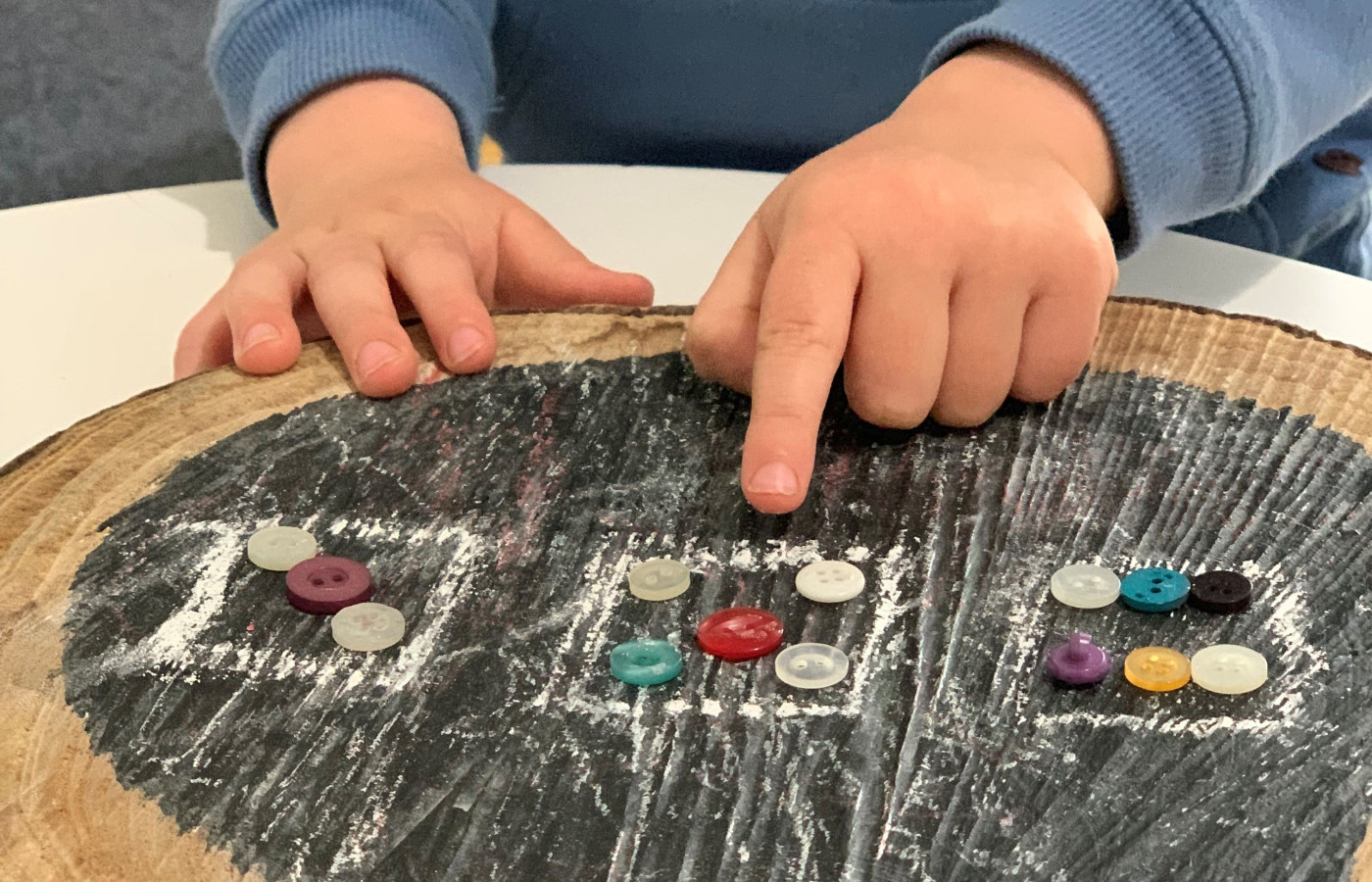Number guessing game - subitising

Number guessing game - subitising
Guess the number of items without counting
Materials Required
- Loose parts (small items, objects) in the home - e.g. buttons, pegs, small stones, leaves, Lego pieces, small blocks, beads, marbles, small shells etc.
- Number cards - paper or cardboard with numbers on them to 10
- Shoe box or container to collect loose parts
Piece of material or cardboard to cover objects, crayons, textas, pencils, paper, cardboard
Play experience profile
-
Age:
-
Min Playtime5 - 15 Minutes
-
Skills
-
Energy LevelQuiet Play
-
Messiness Rating
-
EYLF Outcomes
Play Experience Preparation
Collect items in a loose parts box or container - go for a hunt for small loose parts inside and outside the home.Experience Steps
- Using your loose parts box - choose materials that are the same (e.g. buttons, marbles, counters, small blocks, stones).
- Make some simple number cards with cardboard or paper with your child.
- Line up numbers in order.
- Have your child close his/her eyes.
- Arrange the loose parts to represent the arrangement of dots on a dice, one number at a time behind a screen or under material.
- Say to your child: 1,2,3 look and see!
- Remove the screen or material to show the objects.
- Ask your child how many they see.
- Have your child point to the number to represent the number of objects.
- Count the objects with your child.

What to talk about, or questions to ask during the experience
- How many did you see?
- 1,2,3 look and see
- Let's count them
- I wonder how many objects are hiding under here? What do you think?
Build on this...
- Playing dominoes
- Playing board games with a dice
- Roll the dice game: record tallies of numbers rolled in a graph
- Lock and key game - draw dots on key tags and numbers on padlocks - find the missing key
WHO guidelines for physical activity and sedentary behaviour
Provide evidence-based public health recommendations for children, adolescents and adults on physical activity.
Learn more
Provide evidence-based public health recommendations for children, adolescents and adults on physical activity. Learn more
Walking around the house inside and outside to collect items/objects for 'Loose Parts Box' is being physically active.
EYLF Outcomes
The Early Years Learning Framework has been designed for use by early childhood educators working in partnership with families, children’s first and most influential educators.
View PDF
The Early Years Learning Framework has been designed for use by early childhood educators working in partnership with families, children’s first and most influential educators. View PDF
- Children develop dispositions for learning such as curiosity, cooperation, confidence, creativity, commitment, enthusiasm, persistence, imagination and reflexivity
- Children transfer and adapt what they have learned from one context to another
- Children begin to understand how symbols and pattern systems work
EYLF Principle
Principle 3: High expectations and equity. Children progress well when they, their parents and educators hold high expectations for their achievement in learning.
EYLF Practice
Practice: Learning through play. Play can expand children’s thinking and enhance their desire to know and to learn. In these ways play can promote positive dispositions towards learning. Children’s immersion in their play illustrates how play enables them to simply enjoy being.
Subitising is the abiltiy to quickly identify a number of items in a set without counting them.
Author:


